what to do when touched by a poisonous white caterpillar
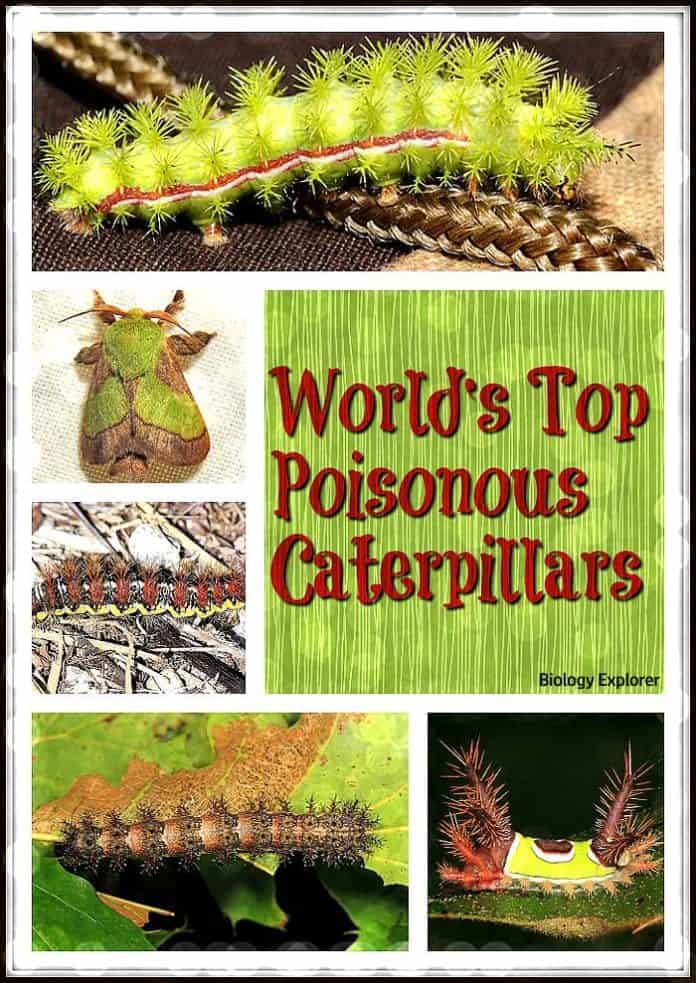
Poisonous Caterpillars: Equally the spring comes to the forests and glades, and everything is painted green, we may eagerly await the blooming season. The pleasant smell of flowers brings bright-colored collywobbles to meadows and gardens. However, there is a downside to this: collywobbles cannot appear without getting through the caterpillar phase.
Table of Contents
- How do caterpillars become poisonous?
- Poisonous Caterpillar vs. Venomous Caterpillar
- Height 15 Poisonous Caterpillars
- Buck Moth Caterpillar (Venomous)
- Saddleback Caterpillar (Poisonous)
- Monkey Slug Caterpillar/Hag Moth Caterpillar (Poisonous)
- Hickory Tussock Caterpillar (Poisonous)
- Southern Flannel Moth Caterpillar or Puss Caterpillar (Poisonous)
- Spiny Oak Slug Moth Caterpillar (Venomous)
- Io Moth Caterpillar (Venomous)
- White Flannel Moth Caterpillar (Poisonous)
- Stinging Rose Caterpillar (Venomous)
- American Dagger Caterpillar (Poisonous)
- Smeared Dagger Moth (Poisonous)
- Laurelcherry Smoky Moth (Poisonous)
- Variable Oakleaf Caterpillar (Poisonous)
- Pino Processionary Caterpillar (Poisonous)
- Behemothic Silkworm Moth Caterpillar (Poisonous)
- Does a caterpillar beingness poisonous really help it?
- Top 10 Poisonous Birds
Those worm-similar creatures are, in a fashion "butterfly kids". They exist to feed on the leaves, grow, make cocoons and provide enough energy for a future butterfly. Caterpillars are usually not very well liked.
After all, they eat leaves – and thus destroy plants. However, some caterpillars are not only a nuisance. They can be pretty unsafe for those who endeavor to touch on them or to eat them.
Gardeners may hate caterpillars because they destroy fruit trees and bushes, but many animals honey to consume them. Caterpillars have to be wary of multiple predators. They employ various protective strategies to avoid being eaten!
For instance, their coloring can allow them to hide in obviously sight through camouflage. Different species course colonies. Nevertheless, we shall now talk over a tertiary, much more than daring survival strategy.
Several caterpillars develop chemical warfare – they go poisonous. Moreover, some take developed poisons that tin can literally kill a man.
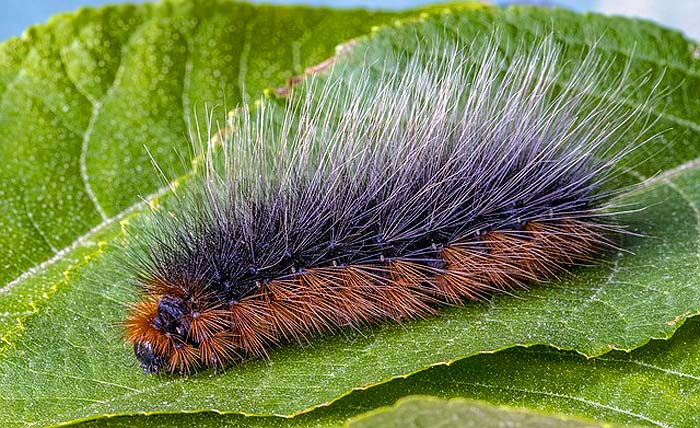
There are several methods the insects can use to go poisonous.
- Some caterpillars feed on poisonous plants like milkweed, and storing poisonous substance within; others leak acids.
- Still, the well-nigh dangerous caterpillars have developed their ain detachable weapons containing potential chemical warfare.
- The latter grouping is quite numerous, and one tin detect caterpillars with stinging hairs in the Americas, Europe, and Australia.
![]()
A poisonous caterpillar will harm you if you touch, exhale or consume it due to the toxic substance it carries. On the other manus, a venomous caterpillar injects a toxin or poison through a sting. And then in the following listing of caterpillars, we have marked the venomous vs. poisonous kind.
![]()
Meridian 15 Poisonous Caterpillars
There are many kinds of poisonous caterpillars. One can observe them in almost every identify on the planet, except probably the South and North Poles. North and South America are exceptionally lucky (or unlucky) in this regard: ane tin meet more than than xv species of poisonous caterpillars there, and the ones in Due south America are considered extremely dangerous.
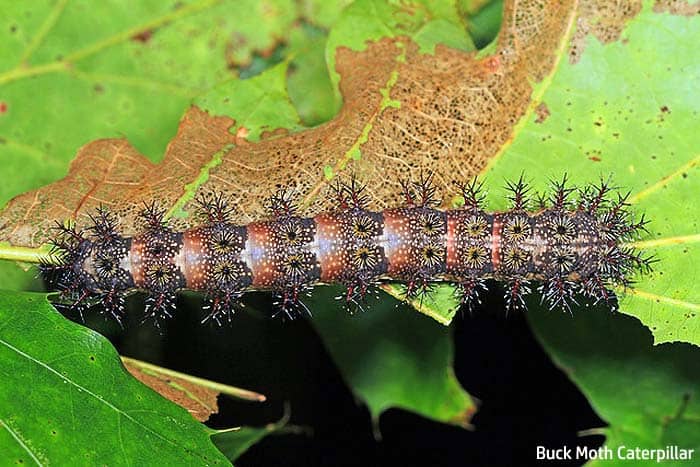
| Kingdom | Order | Family | Genus | Species |
|---|---|---|---|---|
| Animalia | Lepidoptera | Saturniidae | Hemileuca | Hemileuca maia |
The offset poisonous caterpillar in our listing is Buck moth caterpillar. These caterpillars can be seen in about states of the Southeastern US.
- These harmful caterpillars have a black body with distinct white spots.
- At that place is a light form of the species that has a body with a greenish coloring and more prominent spots that look like starfish.
- The head and limbs called prolegs are red.
- In that location are multiple, sparse and branching spines roofing the body.
- These venomous caterpillars commonly come out effectually July, and the developed moths fly out in autumn.
- These almost poisonous caterpillars adopt to eat oak leaves but can also dine on willow, hazelnut, cherry, and rose, as well every bit grasses.
- The brittle spines on the caterpillar's body carry a poison that tin cause dissimilar reactions, from elementary rash or swelling to severe shock.
- This species is a part of the giant silkworm moths family unit, which likewise contains big, beautiful butterflies beloved by collectors.
![]()
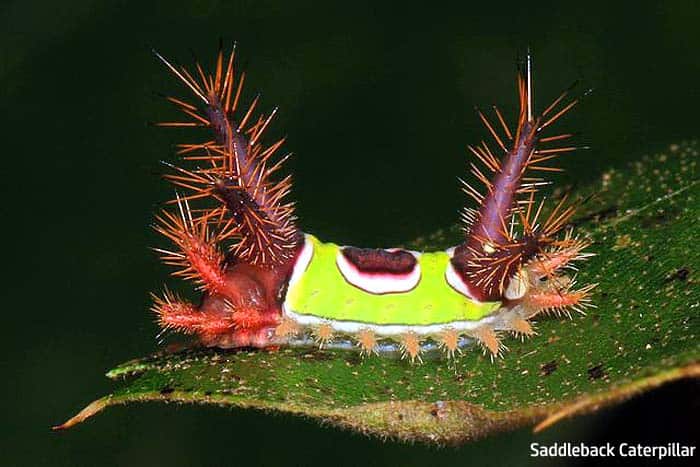
| Kingdom | Guild | Family | Genus | Species |
|---|---|---|---|---|
| Animalia | Lepidoptera | Limacodidae | Acharia | Acharia stimulea |
These unique, slug-like poisonous caterpillars can be found in the Eastern Us.
- Saddleback caterpillar has a small, stocky body and resembles a slug.
- Chief torso color of this poisonous caterpiller is dark-brown, and in that location is a distinct, bright dark-green marking in the heart of the body, with an oval-shaped reddish mark in the middle that resembles a saddle.
- Y'all can rapidly notice two stocky, thick thorns on both head and tale that are covered with spines.
- Saddlebacks hatch from the eggs in jump and late winter (February-March), equally they need effectually 5 months to abound and turn into a butterfly entirely;
- These deadly caterpillars are universal feeders and can eat leaves of multiple types of trees including maple, oak, palms, and chestnuts.
- This poisonous caterpillar has a stiff toxicant that destroys blood cells. Even a small-scale prick from the poisonous spine can cause asthma, stomachache, and bleeding.
- When attacked, the saddleback tries to shorten its stocky trunk as much equally possible, putting the blackthorns with spine forrad.
- The moth of this caterpillar is wholly unremarkable and is painted in mottled brown.
![]()
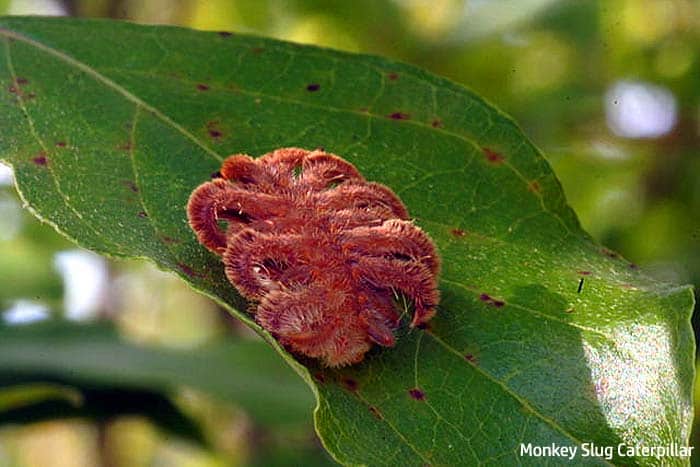
| Kingdom | Guild | Family | Genus | Species |
|---|---|---|---|---|
| Animalia | Lepidoptera | Limacodidae | Phobetron | Phobetron pithecium |
The butterflies of this species usually reside in the Eastern States of USA.
- The and so-called "monkey caterpillar" has a short, stocky trunk with nine pairs of bendable "arms" covered in brown, thin pilus.
- This poisonous caterpillar commonly feeds on the underside of the leaves and relies on suction cups to agree on.
- These slug-like critters commonly hatch in the jump.
- Unlike real monkeys, these creatures are not picky about food and can be establish on leaves of different trees, from oak and elm to apple tree and cherry.
- The poison of the hair is mild and causes allergic reactions only in particularly sensitive people.
- While the caterpillar itself is called "monkey slug, the adult moth is named "hag moth," though it is instead an ordinary looking insect with yellow wings that has null nightmarish almost its appearance.
![]()
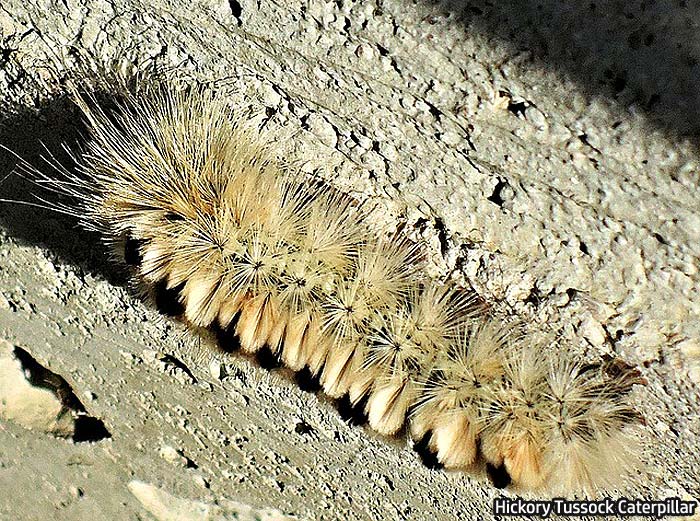
| Kingdom | Order | Family | Genus | Species |
|---|---|---|---|---|
| Animalia | Lepidoptera | Erebidae | Lophocampa | Lophocampa caryae |
The next poisonous caterpillar in our list is Hickory tussock caterpillar. These are native to Southern Ontario, Canada.
- The body of this caterpillar is painted in blackness and white: The primary color of the torso is white, with thin hair on the sides. There are connected black markings in the eye of the dorsum.
- The front and the rear of the caterpillar's trunk is covered with long, black hair that contains poison.
- A prick from the poisonous pilus results in a rash or a swelling similar to poison ivy.
- People that are sensitive to the tussock caterpillar poison may develop astringent allergic reactions or feel nauseous.
- The blackness & white caterpillars are specific feeders and prefer hickory, walnut, elm and oak leaves.
- It is ameliorate to be wary of these black and white fuzzy caterpillars from July to September when they actively roam and feed.
![]()
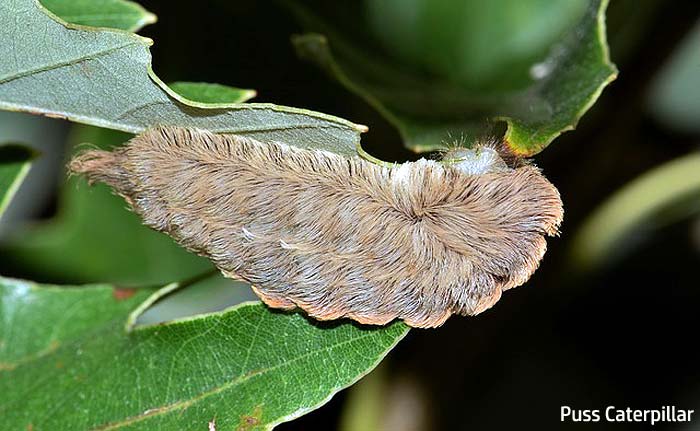
| Kingdom | Social club | Family | Genus | Species |
|---|---|---|---|---|
| Animalia | Lepidoptera | Megalopygidae | Megalopyge | Megalopyge opercilaris |
The puss caterpillar is widespread in the Southern States, including New Jersey, Arkansas, Florida, and Texas.
- The immature caterpillars await relatively ordinary – pocket-sized, thin, yellow and covered with hairs that stick from the sides.
- These Florida caterpillars at the last stages of growth have a slug-like tiny body covered with many orange or bright yellowish hairs that resemble fur.
- The poisonous substance of the mature caterpillar is highly unsafe and tin destroy blood cells.
- People who bear upon the creature ordinarily feel the burning pain immediately, which is then followed past a rash that looks like an imprint of the spines.
- Then the people may develop bleeding, difficulty breathing and other dangerous symptoms.
- At that place were reports when schools were airtight in Texas due to the affluence of puss caterpillars. These insects adopt oak and citrus copse that oftentimes grow near schools and kindergartens, and children oftentimes attempt to grab them.
![]()
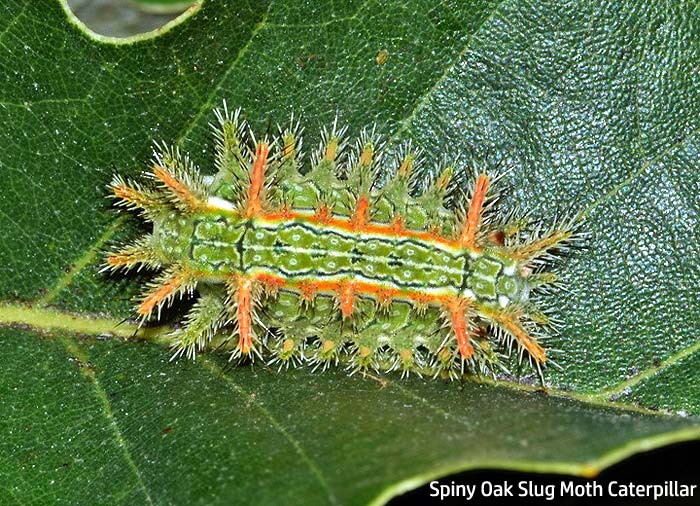
| Kingdom | Gild | Family | Genus | Species |
|---|---|---|---|---|
| Animalia | Lepidoptera | Limacodidae | Euclea | Euclea delphinii |
Spiny oat slug moth caterpillars are the next poisonous caterpillars in our list. They live in most eastern states in the U.s. upward to the northern areas of Ontario, Canada.
- These stinging caterpillars can appear twice a twelvemonth in warmer areas and just in one case a twelvemonth on leap in colder ones.
- This caterpillar is more than conventional. The body can be light green, yellow, scarlet or orange.
- This venomous yellow caterpillar feeds on oak leaves exclusively.
- The body of the spiny oak slug moth is covered with thick branching horn-like structures with tiny short spines on them, resembling holly copse.
- The spine's poison causes mild allergies.
![]()
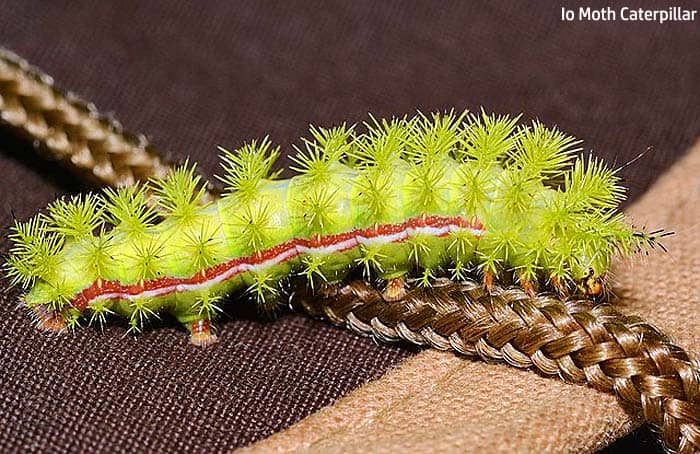
| Kingdom | Order | Family unit | Genus | Species |
|---|---|---|---|---|
| Animalia | Lepidoptera | Saturniidae | Automeris | Automeris io |
Io moth butterflies and their caterpillars can exist found in Cape Cod and Massachusetts, sometimes in the Gulf States and New England.
- As they grow, the caterpillars change their color from reddish brown with black spines to light green with reddish-white stripes.
- The spines of Io moth caterpillar are arranged in singled-out "bouquets".
- This stinging caterpillar is non a picky eater and feeds on many types of trees – maples, cherries, birches, fifty-fifty cranberry, and gooseberry plants.
- The spines arranged in "bunches" are mildly poisonous. Usually, cause allergic reactions.
- The moth of this species usually active in the afternoon and evening and have distinct "eyes" on the lower wings.
![]()
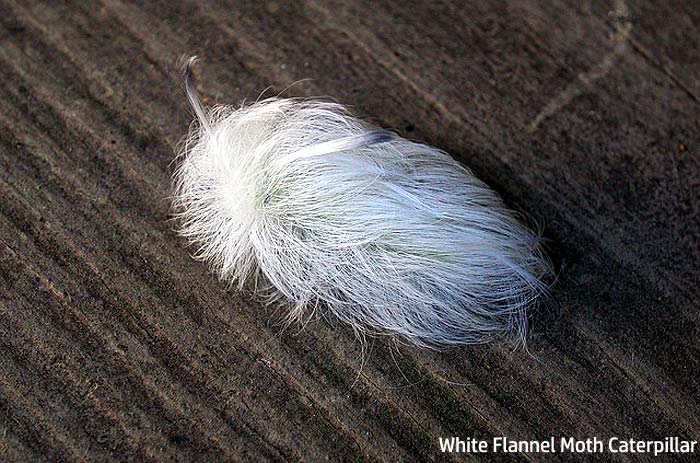
| Kingdom | Order | Family | Genus | Species |
|---|---|---|---|---|
| Animalia | Lepidoptera | Megalopygidae | Norape | Norape ovina |
A relative of the southern flannel moth caterpillar, this poisonous caterpillar can exist institute in Lousiana, Mississippi, Alabama, and Tennessee.
- Dissimilar its more famous relative, white flannel moth caterpillar has a dark-colored, small body with round, xanthous-colored patches.
- There are puffs of stinging black pilus on the back.
- The head and tail of the caterpillar are orange, in contrast to the rest of the body.
- White flannel moth caterpillar possess stinging hair that crusade pain, sometimes allergy and swelling.
- Some other distinct feature of the white flannel moth caterpillar is the presence of a chain made of natural black triangle markings between the bright yellow spots.
- This yellow poisonous caterpillar prefers hackberry, black locust, and redbud.
![]()
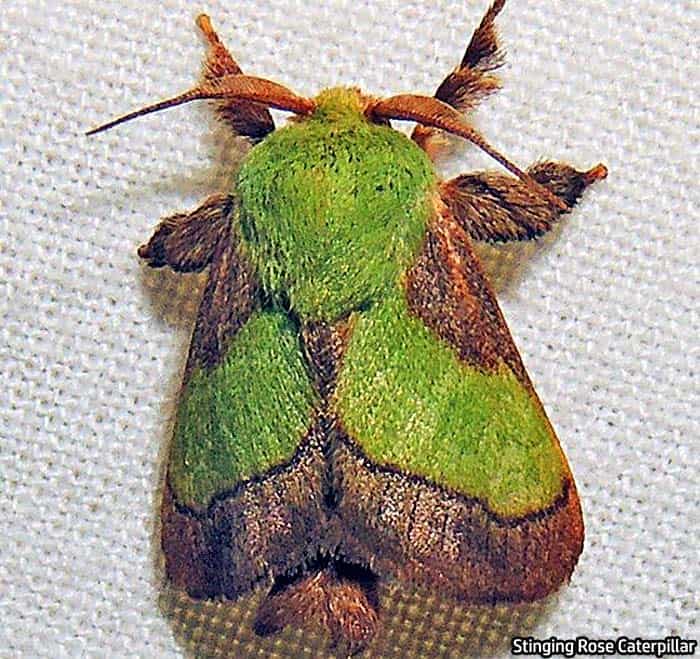
| Kingdom | Order | Family unit | Genus | Species |
|---|---|---|---|---|
| Animalia | Lepidoptera | Limacodidae | Parasa | Parasa indetermina |
This peculiar poisonous caterpillar lives in many States west to Texas and Oklahoma, including Florida, New York, Philadelphia, and Illinois.
- The appearance of the stinging rose is very striking: the caterpillar has a vivid yellow or orange body that has a signature purple stripe running along the back. In that location are also reddish lines on either side of the caterpillar'southward torso.
- The poisonous substance is independent in the stocky yellowish horn-like structures with smaller and thinner spines that comprehend the torso.
- You run a risk encountering these spines almost everywhere, as this stinging caterpillar tin exist found on rose bushes, maples, oaks, poplars, dogwood, and hickory.
- The toxicant mainly causes allergic reactions, which can be severe in sensitive people and quite mild for others.
![]()
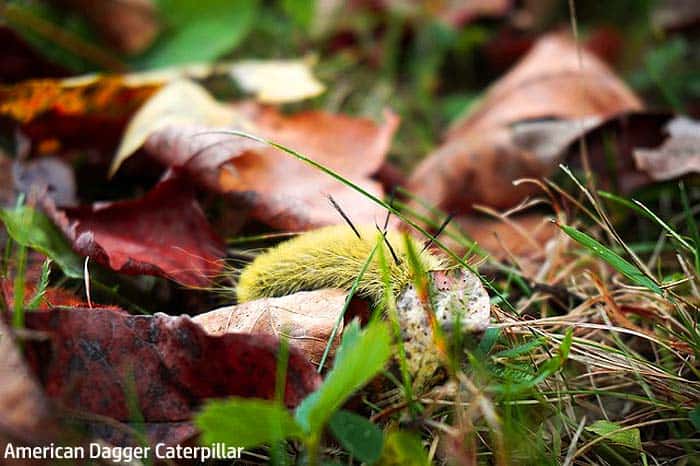
| Kingdom | Order | Family | Genus | Species |
|---|---|---|---|---|
| Animalia | Lepidoptera | Noctuidae | Acronicta | Acronicta americana |
This species is truly American – it can be establish throughout the whole Eastern N America.
- The body of American dagger moth caterpillar is brusk, covered with thin, long green pilus.
- Thin, long blackness spines are protruding amongst the fur-like hair, forming a whole bunch on the rear end.
- The black thick spine-similar pilus is the source of toxicant that tin can cause a painful rash.
- The green spiky caterpillar feeds on most mutual wood trees, such every bit oak, ash, and elm.
- Is American dagger moth caterpillar poisonous to humans? Of grade, it is. Some people can find them on the ground – exercise NOT pick them upwardly without gloves!
![]()
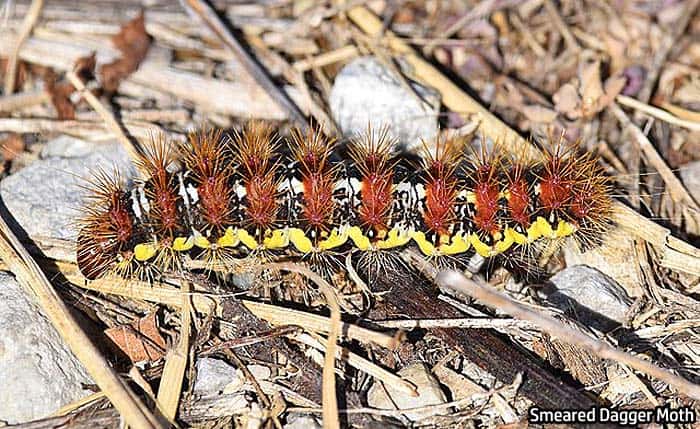
| Kingdom | Society | Family | Genus | Species |
|---|---|---|---|---|
| Animalia | Lepidoptera | Noctuidae | Acronicta | Acronicta oblinita |
Another member of the dagger moth family unit, this poisonous caterpillar also lives in Eastern North America.
- The torso of the caterpillar is blackness with bright yellow stripes on the sides.
- Smeared dagger moth caterpillar also has stinging hair that cause severe hurting, even allergy and swelling.
- The back of the caterpillar is adorned with bunches of sparse, white bristles, reddish at the base.
- The Smeared dagger moth caterpillar tin can feed on anything from grasses to fruit trees.
![]()
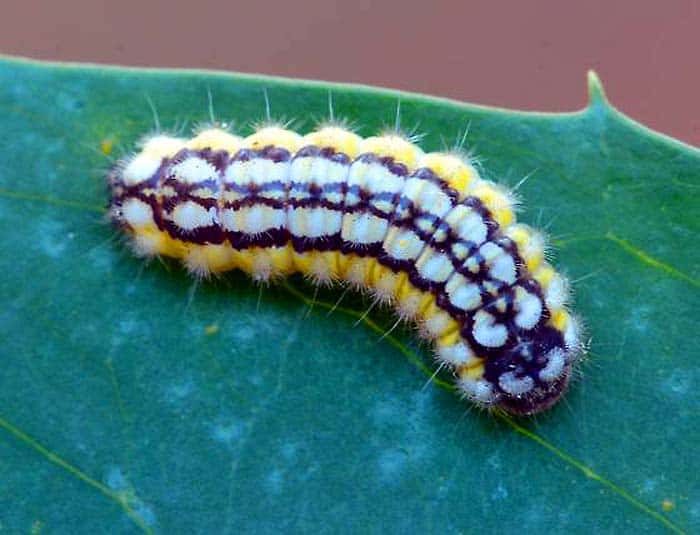
| Kingdom | Order | Family | Genus | Species |
|---|---|---|---|---|
| Animalia | Lepidoptera | Zygaenidae | Neoprocris | Neoprocris floridana |
This mildly poisonous caterpillar lives in Florida.
- This species prefers Carolina laurelcherry to annihilation else.
- The short and stocky body of this caterpillar is transparent yellow on the sides, with intermittent blackness stripes.
- The danger comes from the small, curt, yellow pilus that covers the body.
- The pilus literally stings – the victim get-go feels hurting, then a rash develops on the skin, followed by blisters.
- This caterpillar too has a small hood which tin can hibernate his head when necessary.
![]()
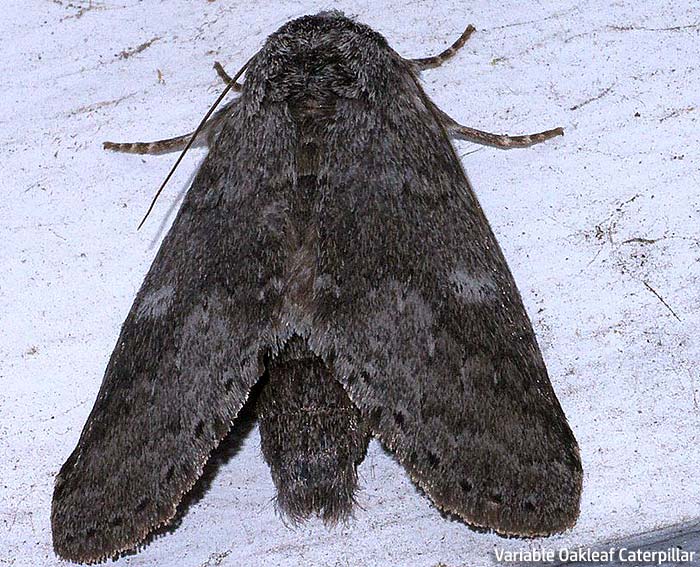
| Kingdom | Order | Family unit | Genus | Species |
|---|---|---|---|---|
| Animalia | Lepidoptera | Notodontidae | Lochmaeus | Lochmaeus manteo |
This poisonous caterpillar is another resident of Eastern Northward America.
- As the name suggests, the caterpillar is almost exclusive to oaks.
- If you wish to meet the species – wait for July or Baronial.
- It has earned the proper noun "variable" considering it can accept dissimilar markings on its long, lanky body.
- The only universal feature is the distinct carmine stripe on the back.
- Even if there are different variations, the principal colors, the caterpillar wears are ruby and green.
- Instead of poisonous spines, this caterpillar produces formic acid that stings and tin can cause allergy.
Moreover, now let the states introduce you to two unique representatives of butterflies and moths that alive exterior the U.s.a..
![]()
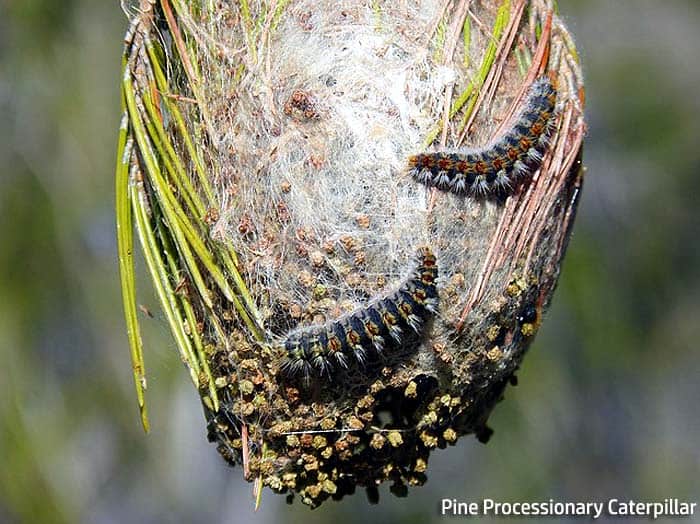
| Kingdom | Order | Family | Genus | Species |
|---|---|---|---|---|
| Animalia | Lepidoptera | Thaumetopoeidae | Thaumetopoea | Thaumetopoea pityocampa |
The adjacent poisonous caterpillar lives in Southern Europe.
- These caterpillars of this species are social: they class colonies that travel together from tree to tree.
- The body of the caterpillar is colored greenish with yellow stripes and is covered with sparse, whitish spines.
- This caterpillar feeds exclusively on pino needles, and each colony settles on a pine co-operative and makes a nest of silk threads.
- The spines tin can crusade but a mild allergy in humans, just they are dangerous for pets, specially dogs.
- Tourists coming to France and Espana are advised to proceed their dogs from the processions of caterpillars and to avert standing under pines in summer, especially if in that location are caterpillar nests.
![]()
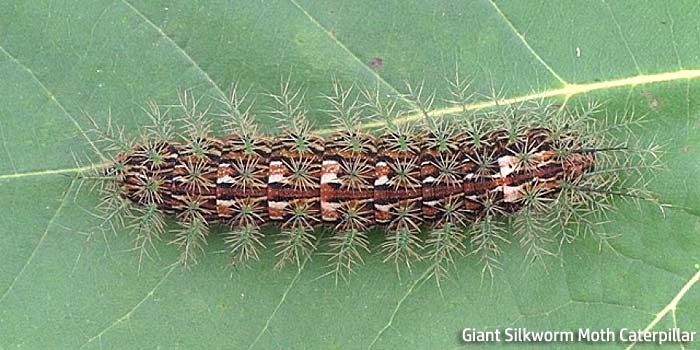
| Kingdom | Guild | Family | Genus | Species |
|---|---|---|---|---|
| Animalia | Lepidoptera | Saturniidae | Lonomia | Lonomia obliqua |
The last poisonous giant silkworm moth caterpillar is a Brazilian citizen and prefers rainforests.
- The color blueprint of the giant silkworm caterpillar is not peculiarly remarkable – it is by and large brown and green, with a striped pattern.
- The whole body of the caterpillar is covered with sparse white spines with multiple branches. The endings of the branches are colored black.
- The venom of this caterpillar tin can prevent the blood from clotting, causing haemorrhage and destruction of the body from within.
- The medics effectually the earth actively study this venom, because information technology tin help in the treatment of some heart diseases considering of its ability to deliquesce blood clots.
- These caterpillars are besides guardians: the trees where the giant silkworms reside are not damaged past monkeys or other animals. This mode, the copse get high-grade protection for the price of the few leaves.
![]()
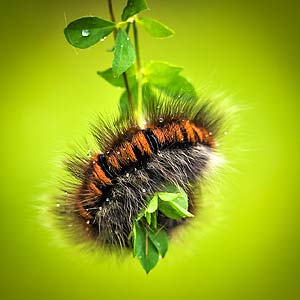
There are many poisonous caterpillars, as you can see. However, it does not mean the poison fully protects them.
- The birds that desperately need protein that the caterpillars can provide discover their own ways.
- Some eat caterpillars when they are very young and have weak poison.
- Others develop a resistance to a particular poison that the caterpillars apply.
- Of course, giant silkworms are the exception – no known beast tin stand up upward to them.
Suggested Reading:
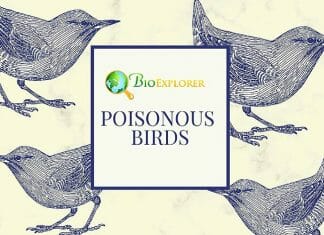
Top 10 Poisonous Birds
Among the dissimilar strategies deployed past birds to escape predation is the use of toxic chemicals (poison). Here are the superlative 10 poisonous birds in Aves family.
![]()
In decision – if y'all see a bright colored, fluffy caterpillar with suspicious horns or spines – avert them at all costs. If you lot must remove them – use protection. Many species pretend to be poisonous, but it is still improve to be on the condom side.
![]()
Cite This Page
Source: https://www.bioexplorer.net/poisonous-caterpillars.html/

0 Response to "what to do when touched by a poisonous white caterpillar"
Post a Comment